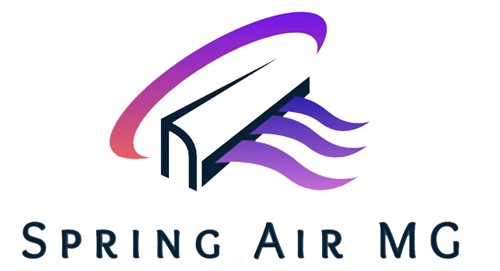Dust, pollen, pet dander, and renovation residue do not just sit on shelves. They settle inside return lines and supply trunks, then recirculate each time the blower starts. When buildup gets heavy, indoor air quality drops, comfort suffers, and energy costs rise. Here are seven clear signals that it is time to schedule a professional air duct cleaning, plus what to expect and how to keep results longer.
Sign one: Dust keeps coming back fast
You wipe in the morning and by afternoon a gray film is back, especially near vents and on furniture below registers. Look closely at vent grilles and nearby walls. Fuzzy edges or dark streaks around the louvers point to particles leaving the duct and redepositing in the room.
Sign two: Allergy or asthma symptoms spike when the system runs
If sneezing, itchy eyes, or throat irritation get worse at home or the moment the blower turns on, your ductwork may be holding allergen fragments that cycle into living spaces. Cleaning reduces these reservoirs so your filter can actually capture what is in the air.
Sign three: Musty or stale odors at startup
A sour or damp smell when heating or cooling begins often traces to debris and moisture inside returns or near the coil and drain pan. A thorough cleaning, paired with basic moisture control, usually clears these odors so the first minutes of each cycle smell neutral again.
Sign four: Uneven airflow and stubborn hot or cold rooms
Weak supply at certain vents can come from obstructions such as lint mats, construction dust, or pet hair inside branch lines. Once blockages are dislodged and captured under negative pressure, airflow balances and far rooms feel closer to the set temperature.
Sign five: Rising energy bills with no obvious cause
When dust coats blower blades and coils, the system must run longer to move the same air. That extra run time shows up on utility bills and wears components faster. Restoring clean interior surfaces helps the equipment reach setpoints with less effort.
Sign six: Visible trouble in or around vents
Spots that look like growth on the inside of a vent cover, damp staining near returns, or pest debris at duct openings are red flags. In these cases, cleaning should be paired with source correction such as fixing leaks, improving drainage, sealing penetrations, and addressing pests.
Sign seven: You recently renovated or just moved in
Drywall sanding, floor refinishing, and attic work create ultra fine dust that settles deep in returns. If you remodeled or purchased a home with a history of projects, a post construction cleaning removes the hidden residue that a filter change cannot touch.
What a professional cleaning actually includes
Reputable providers begin with a system inspection, register count, and photos. They create access, connect a high CFM HEPA vacuum to establish negative pressure, and seal registers to contain dust. Rotary brushes and air whips dislodge buildup from supply and return runs so debris travels into sealed filtration. The blower compartment and return plenum are addressed, the evaporator coil housing is inspected and cleaned when appropriate, and the visit ends with visual verification, reassembly, and tidy cleanup.
How often to schedule and when to go early
Many homes do well every three to five years. Households with shedding pets, fireplaces, strong allergy concerns, or frequent projects often benefit from every two to three years. Move the appointment forward if you notice any of the seven signs, if odors linger at startup, or if you inherit a system with an unknown maintenance history.
Simple habits that keep ducts cleaner between visits
Use the best filtration your system can handle and change filters on time, often every one to three months during heavy use. Keep indoor humidity around forty to fifty percent so condensation does not feed odor problems. Seal accessible duct leaks in attics and crawlspaces to stop dust intrusion, keep returns clear of furniture and drapes, vacuum vent grilles and nearby walls, and schedule coil and condensate drain service at the start of cooling season.
The bottom line
If dust returns quickly, airflow feels weak, or allergy symptoms surge when the system starts, your ducts are likely circulating what you are trying to remove. A professional air duct cleaning restores healthy airflow, helps your filter work as designed, and makes rooms feel cleaner and more even. Pair the service with better filtration and humidity control and you will feel the difference within days.
